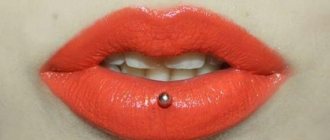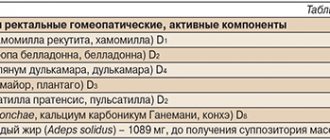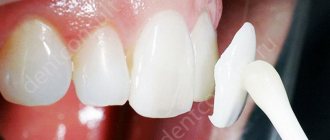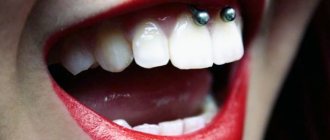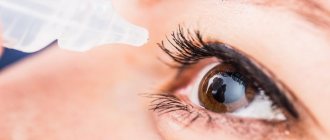general information
Streptodermia refers to a pathology caused by streptococci. If we talk about the external manifestations of the disease, blisters and purulent rashes that itch appear on the skin.
Streptoderma in children can occur in two different forms: acute and chronic. Acute is characterized by pronounced symptoms, and chronic - by periodicity.
According to the degree of damage, the disease is classified into superficial, deep and intertriginous. Each form has a specific feature.
Ways to wean yourself off the pacifier
"Soska wants to go for a walk"
During the day, you need to remove the pacifier from the baby's field of vision. When he looks for her and persistently asks, you should explain that the dummy has gone for a walk. She likes to walk during the day and returns only in the evening. At first, the child will only fall asleep with the pacifier, and then he will be able to refuse it completely. If the baby is under 1 year old and does not accept such a story, simply remove the pacifier and try to distract his attention as soon as the whims begin. The main thing is consistency. If you are determined to wean your child off the pacifier, do not contradict your words and do not give the pacifier while he is awake.
Buying another pacifier
Grandmother’s method, which has been used for more than one generation, is to cut the pacifier so that it is inconvenient to suck on. But it has a big disadvantage: the baby can get hurt with such a nipple. Nowadays, pharmacies and children's stores offer a huge variety of pacifiers; they differ in size, shape and even taste. If your baby has certain preferences, buy him a completely different pacifier that he definitely won't like. When the baby is naughty, do not give back his favorite pacifier, but distract his attention.
“Let’s give a pacifier to Lala”
This method is suitable for 2- and 3-year-old children, with whom you can already reach an agreement. This is especially true if a little brother or sister has appeared in the family. In this case, it is worth offering to give the pacifier to someone who needs it more. You can also send a parcel to a bunny or squirrel with your child, and write a letter together for the “recipient”. In play, it is easier for a child to accept rejection of his favorite “toy.”
Loss of pacifier
This method is great if the baby likes to play with the pacifier and may spit it out or throw it away. It can be shown that after such a throw the dummy was actively searched for, but was never found. If your child already knows that a new pacifier can be bought in a store, try to avoid counters where he can see it.
Pleasant exchange
The story of the tooth fairy will help here (you can come up with any character that your child likes). Tell your child that he has become big and his favorite hero can take his pacifier and bring him a gift in honor of this event. Offer to put the pacifier under the pillow and give her a toy in the morning.
Using the Vestibular Plate
Such plates, like many nipples, are made of silicone, but have a different shape. The products are intended not only for weaning off the pacifier, but also to prevent the development of malocclusion.
Symptoms
If streptoderma occurs, what is the treatment? Before we know the treatment options, let's find out the symptoms. The disease in children occurs in extremely severe forms:
- temperature up to 39C,
- poisoning,
- large lymph nodes.
The texture of the skin may vary depending on the form of the pathology:
- Superficial. Initially, red spots form on the skin. After a couple of days they turn into blisters with a certain liquid inside. The blisters grow up to two cm in diameter, after which they rupture. Yellow crusts form in this area. After this, the skin in this area heals, and the pathology develops further.
- Dry streptoderma . This form usually occurs in boys. Light and pink spots up to 5 cm in diameter form on the skin. They are found everywhere on the body. After they disappear, scars may remain.
- Streptococcal infection. The pathology extends specifically to the corners of the lips; it is encountered when there is a deficiency of vitamin B. Small cracks form on the skin, causing discomfort. After some time, they form into pustules that become crusty. The child has difficulty consuming food, as it causes pain.
- Felon. In a situation where streptococcus spreads to the area around the nails, panaritium develops. Oddly enough, this disease is more often encountered by children at an early age who bite their nails.
- Streptococcal diaper rash. This form of pathology is typical for breastfed children. Blisters form in the folds of the skin.
Understanding how streptoderma begins to develop in children, treatment which requires timely contact with a dermatologist and the implementation of therapeutic actions, not a minute can be lost. If you constantly put off going to the doctor, the pathology can develop into a chronic form, and it will be almost impossible to achieve a final cure.
streptoderma, treatment
What to do if a newborn has a callus on the lip
- First of all, determine whether it is really a milk callus and not a symptom of any disease;
- As a rule, a milk callus is located on the upper lip of a newborn. It can be observed much less frequently on the lower one;
- A real milk callus does not cause discomfort to the baby, he continues to eat and suck the breast or pacifier, behaves calmly, does not cry or be capricious;
- A true milk callus is white or light in color and has a clear liquid inside;
- Milk callus does not require treatment. It disappears on its own, may appear again and be regular;
- Do not open the bladder or release the liquid, otherwise you will injure the tissues and increase the risk of infection!;
- If the callus bursts on its own, treat the area with hydrogen peroxide;
- If the callus causes discomfort during feeding and provokes anxiety, then an infection has occurred and the disease begins;
- A watery blister with yellowish liquid and bright redness around indicates the presence of stomatitis or thrush;
- An elevated temperature and the appearance of several watery formations are signs of herpes;
- Herpes, stomatitis and thrush must be treated.
Causes
The causative agent of streptoderma, the photo of which you will find below, is group A streptococcus. However, it is worth noting that infection can only develop in a situation where certain factors are present:
- skin damage,
- lack of following basic hygiene rules,
- weak immune system,
- disruption of the endocrine system,
- dermatological diseases,
- depressive mood
- vitamin deficiency,
- constant washing of the skin, which leads to damage to the protective layer,
- strong influence of different temperature ranges,
- poisoning,
- circulatory disorders.
Correct and incorrect breasts
Suspicious mothers and compassionate grandmothers tend to twist facts and make a problem out of nothing. Often, having identified a callus on the lip of a newborn during breastfeeding, parents and their relatives believe that it arose due to improper breast structure or the baby’s inability to take the nipple.
In fact, if the mother does not experience discomfort during feeding, the baby latch onto the breast well and is able to eat, then there are no problems with feeding. The only nuance that is worth noting is that with the now popular method of feeding on demand, and not by the hour, the baby is attached to the mother’s “boob” quite often. If he stays near the nurse for a long time (more than the prescribed 15-20 minutes), then the likelihood that a “milk” callus will appear on his lip increases significantly.
Therapy
Streptoderma has occurred ? Even in cases where the initial examination was carried out by a pediatrician, only a dermatologist can select therapy. Doctors in this field have an understanding of drugs with a narrow scope of action.
The first step is to limit the child’s diet. The course of treatment also involves avoiding water procedures, which can cause the spread of the disease. Healthy areas of the skin should be washed with a solution of chamomile, and damaged areas should not be touched at all.
The sick person needs to choose the right wardrobe, from which items of clothing made from synthetics and wool must be removed.
Doctors advise popping blisters that form on the skin with a disinfected needle, after which the abscess should be drained twice a day. Healthy areas of the skin are washed with a boron solution.
If crusts appear on the skin, they should be treated with antibacterial gels or ointments.
In more complex situations, many other medications may be prescribed:
- antibiotics for streptoderma of the tetracycline or chloramphenicol series,
- means that prevent the occurrence of an allergic reaction,
- means aimed at improving the body's immune system,
- vitamin preparations,
- antipyretic.
The set of medications must be discussed with the doctor. With the right treatment, the symptoms disappear within a week, but after the severe form is eliminated, scars may remain. This is what streptoderma looks like .
what does streptoderma look like?
How to treat heat rash in newborns
The best treatment is prevention. To prevent heat rash from occurring, try to maintain the temperature in the apartment no higher than 22 degrees, regularly ventilate the baby’s room, and dress him according to the weather in loose clothing made from natural fabrics. At home in the heat, do not put on diapers for your baby, or at least change them promptly (once every 3 hours, regardless of how full they are). When changing, be sure to wash your baby and leave him to wallow without a diaper for 10-15 minutes so that the skin dries and ventilates. Do not apply greasy creams or cosmetic oils to your child’s skin in hot weather.
It is important!
If prickly heat has already appeared, then all of the above measures will also be relevant.
The task of parents is to keep the skin clean, provide air access to it, and prevent overheating. Usually this is enough for prickly heat to go away on its own in 3-7 days. If the rashes do not decrease or even become stronger, then pharmaceuticals will be required for treatment. But they can only be prescribed by a doctor after examining the child. Depending on the nature of the rash, the pediatrician will recommend antiseptics, products with dexpanthenol, zinc oxide or glucocorticosteroids.
Causes of complications and re-infection
The reason for re-infection may be incorrect therapy when, for example, if you have primary criteria for improvement, you decide to stop therapy. The most important thing is to remember that you need to unquestioningly follow the advice and instructions of your doctor.
streptoderma complications
How to feed a baby with a cleft lip
The optimal source of nutrition for a child in the first months of life is breast milk. Try to save it for your baby.
You can try breastfeeding a baby with a cleft lip. In some cases, the child will be able to suck even if there is a wide defect in the upper lip. However, remember that during feeding, air access through the nasal passage must be required, otherwise there is a danger of aspiration of the contents of the oral cavity into the trachea with respiratory and cardiac arrest.
In the vast majority of cases, babies with clefts of the upper lip and palate cannot suck. Therefore, it is necessary to use other feeding methods. The most appropriate and simplest way is to feed the baby from a spoon: the newborn is placed in the mother’s arms in a semi-vertical position (head and upper body raised), expressed milk or mixture collected in a spoon drops dropwise onto the baby’s cheek mucosa and is then easily swallowed.
In the first days of a newborn baby’s adaptation to spoon feeding, it is advisable to use a coffee spoon, which you can then exchange for a more capacious one (silicone, plastic or metal). Within 1-2 days you can easily learn how to feed your baby this way. However, during feeding, be sure to control the swallowing of formula or milk. Do not allow a large volume of food in the oral cavity!
During feeding, your baby swallows a large amount of air along with food. Do not forget to take short breaks in feeding, during which the baby is held in a “column” and burps air.
During the feeding process, some auxiliary items can provide you with significant help: special bottles with spoons attached to them or Soft Cup from Medela. In some cases, special devices in the form of a syringe with a nipple from Avent will help you. By pressing the plunger and pressing the nipple against a larger portion of the palate or buccal mucosa, you can easily feed your baby. Some babies prefer the Medela Hubberman sippy cup.
In some cases, in babies with Pierre Robin syndrome, the most appropriate option is to use bottles with replaceable long latex nipples. You can change the number and diameter of holes on the nipple, thereby selecting the most optimal flow of formula or milk.
Please pay special attention: if the child’s somatic status is satisfactory, there is no need for prolonged tube feeding! The exception is newborns who require intensive treatment and appropriate care and observation due to their general (severe) condition.
In any case, after the birth of your child, we strongly recommend that you seek help and advice from a specialized institution. Medical staff will expertly help you choose the best way to feed your baby.
What can streptoderma be confused with?
Pyoderma
With pyoderma, the sebaceous and sweat glands are damaged. The rash appears in certain areas of the skin - parts of the body, scalp.
Herpetic rash
Herpes is characterized by the presence of blisters with constant inflammatory processes. They burst and provoke development.
Thrush or candidiasis
Candidiasis is characterized by erythematous papules or reddened, wet plaques. In the pathology under consideration, the lesion, as a rule, occurs in the mucous membranes or fold areas.
Manifestations of allergies
An allergic rash continues to occur as long as the influence is the causative agent of the allergy.
Important skills
In the first months after birth, the baby and mother need to learn all the subtleties of proper feeding. This process requires some skill. Everything is important: from the comfort of the feeding position to the correct grasp of the breast (nipple).
Mothers of babies who are fed formula can ask the medical staff at the maternity hospital for help; they will show and tell you how to feed the baby and what actions to take after feeding. If your baby is fed mother's milk, if possible, it makes sense to talk to a lactation consultant. After all, everything related to food intake is extremely important. If a child eats regularly, well and correctly (!), the food is completely absorbed. During waking hours he will be calmer and more cheerful, and during sleep he will wake up and cry less often.
Types of disease
- Streptococcal impetigo. The most common standard form of the disease. A characteristic rash forms on the face, arms and legs. This form is also the most limited, since the pathogen does not move beyond the upper layer of the skin, which has certain protective mechanisms. The appearance of the integument does not change, only individual blisters with liquid appear on the reddened areas. Initially, the patient will experience itching, after which the blisters become darker, which helps the blister to crust over. The duration of this process reaches one week. However, it is worth remembering that if the rash resolves, bacteria are further transferred to healthy areas of the integument, which has its negative consequences for the sick person.
- Bullous impetigo. The rashes are located on the arms and legs and had a fairly impressive diameter. Once the blisters open, these areas of skin develop ulcers that can spread quickly.
- Streptococcal diaper rash. Most of the patients are young children and overweight people. The location of the rash is under the mammary glands, in the axillary folds, intergluteal or inguinal-femoral folds. If you are overweight, the abdominal area is affected.
- Ringworm common. Appears in the form of bright pink rashes. The place of appearance is the face. The rash may become smaller due to exposure to direct sunlight. Those areas of the skin that are affected will not take on a tan like before.
- Streptococcal infection is characterized by the formation of blisters in the corners of the mouth. After the blisters disappear, a crack appears in their place, which in a matter of minutes becomes covered with a yellow crust. It also happens that children tear off the crust, but it forms again.
- Streptococcal ecthyma is the most complex form of the disease. The disease is accompanied by the appearance of characteristic lesions and scars on the arms and legs. In case of development of ecthyma, as a rule, there is a deterioration in health.
Symptoms of molluscum contagiosum
The incubation period of the disease ranges from two weeks to several months, but most often the rash appears on the 14-15th day.
At first, single rashes appear, then there are more of them. Molluscum contagiosum can affect any area of the skin except the palms and soles. In children, exposed areas of the arms and legs, as well as the face and neck are most often affected. In adults, the genital area and the inner thighs are most often affected.
In the typical form of the disease, the rashes are located only in one anatomical area; in the generalized form, they spread throughout the body.
Rash
The elements of the rash look like protrusions (papules), firm and painless to the touch, pink or flesh-colored, with a pearlescent top. In the center of the papule there is a small depression, from which, when pressed, a white pasty mass is squeezed out. Papules have a round or oval shape, the size usually varies in the range of 2-5 mm, but sometimes the nodules merge, and then such formations can reach a diameter of 1 cm or more.
More about the symptom
Itching
In some cases, the rash is accompanied by itching, which intensifies when scratching. Under no circumstances should papules be scratched, as this can lead to a bacterial infection. The presence of a bacterial infection is indicated by redness of the skin around the papules, swelling, and suppuration.
More about the symptom
Therapy and drugs
Throughout the spread of the disease, basic hygiene rules should be observed: in the first days, it is forbidden to take baths and wet impetigo, and it is forbidden to comb the affected areas.
Therapy for this disease is aimed at destroying the pathogen and strengthening the protective functions of the immune system. As a complex treatment, antibacterial drugs of the category of cephalosporins, macrolides and penicillins are prescribed. If you have bullous streptoderma, you should stop taking medications. As an immunocorrective treatment, the drugs “Likopida”, “Amiksin” and their analogues are effective. Treatment with drugs for . Restoration of microflora in the intestines occurs with the help of probiotics and prebiotics. Appropriate antihistamines will help get rid of scabies.
Means that increase the body’s resistance to infections in the form of solutions - “Eleutherococcus”, “Echinacea”, “Leuzea”, etc.
Sets of vitamin nutrients should also be taken in accordance with the instructions.
Local treatment includes antiseptic drugs that prevent the spread of putrefactive bacteria. Such medications include various alcohols, brilliant green, as well as their analogues - “Fukartsin”, “Chlorhexidine”, “Miramistin”, “Rivanol” or the cauterizing agent “Resorcinol”.
The use of a huge number of zinc-based pastes, preparations and ointments for streptoderma in children with intense scabies.
Causes
Most often, parents who do not adhere to the basic rules of caring for the child turn to doctors with complaints about heat rash in their baby: they bathe him with soap every day, wrap him up excessively without taking into account the real ambient temperature. Children with skin allergies, diabetes mellitus, rickets, seborrheic dermatitis or frequent diarrhea are also at risk. Chubby, overweight and bottle-fed babies are especially at risk of developing rashes.
Among other reasons for the development of prickly heat in children are:
- non-compliance with normal temperature conditions;
- too hot, tight clothes or shoes that do not allow air to pass through and do not create natural ventilation;
- excessive use of skin cosmetics that disrupt the acid balance and cause increased sensitivity (soaps, baby creams, oils, etc.);
- rare change of diapers or their poor quality, lack of care;
- viral diseases that are accompanied by fever.
Preventive measures and prognosis
Due to the high risk of infection, sick children should keep their distance for some time and not contact other people. Quarantine is provided for up to 10 days. For the entire period of therapy, it is necessary to follow the rules of hygiene.
To prevent the development of the disease, it is necessary to disinfect the child’s personal belongings. Sick children should have a proper diet rich in nutrients. To improve the quality of the immune system, certain measures should be taken.
streptoderma treatment
As a rule, streptoderma ICD 10 in children is cured without any problems. Exacerbation of the disease and re-infection are observed mainly in children from disadvantaged families or in children with weak immunity. With timely treatment, symptoms disappear within one week. If you do not attach any importance to this, the disease can develop into a more severe form. In the worst case, the disease can lead to blood poisoning. For streptoderma, treatment with ointments and antibacterial agents is mandatory.
What does miliaria look like in newborns?
Miliaria, or the colloquial version of “sweet spot”, is a non-contagious and harmless, but unpleasant skin disease for the baby. It manifests itself in different ways. Depending on the nature of the rash and the depth of skin damage, three types of prickly heat are distinguished:
- Crystalline - transparent bubbles on the neck, head, shoulders. They burst easily, but do not cause inflammation and do not bother the child. This type of prickly heat goes away in a few days with good care.
- Miliaria rubra is a small red rash. The skin underneath may also be red and swollen. Miliaria rubra affects the deeper layers, so it can be accompanied by pain and itching. Against this background, an increase in temperature is possible. Most often, this heat rash occurs in the armpits, groin, and neck folds of the baby. The rash can last up to two weeks.
- Miliaria profunda - dense, flesh-colored bumps. Without treatment, it can cause complications due to the addition of secondary infections, but this type of prickly heat practically does not occur in newborns; it usually occurs in adolescents and adults.
Prevention
To reduce the risk of infection, you should follow the following rules:
- follow the rules of hygiene,
- disinfect damage to the skin,
- strengthen the name system with useful substances,
- do not carry out frequent water procedures, as this may pose a certain danger for the child,
- In case of primary symptoms, you should immediately consult a doctor.
Streptoderma on the face can be treated, but only if you consult a doctor in a timely manner. The earlier therapy was carried out, the easier it is to exclude complications and transition to the chronic stage. You can undergo a full examination in a clinical clinic.
How to wean your baby from sleeping with a pacifier
A story familiar to many parents: the child is ready to give up the pacifier during the day, but cannot fall asleep without it. If you have decided to wean your baby off the pacifier for good, the following tips may help you.
1. If the child is under 1 year old, change the daily routine slightly so that feeding is immediately followed by sleep. Let your baby fall asleep at the breast or with a bottle. At this time, you can turn on a gentle melody or read a fairy tale. When breastfeeding, offer your baby a breast instead of a pacifier. At first, you may have to sleep next to him, since he may wake up, and you will need to calm him down without the usual “comforter”.
2. Children from one to two years old can be given rubber teething rings in their crib.
3. You can already talk to children over three years old about the dangers of pacifiers. Try to agree to sleep without your favorite “toy”.

